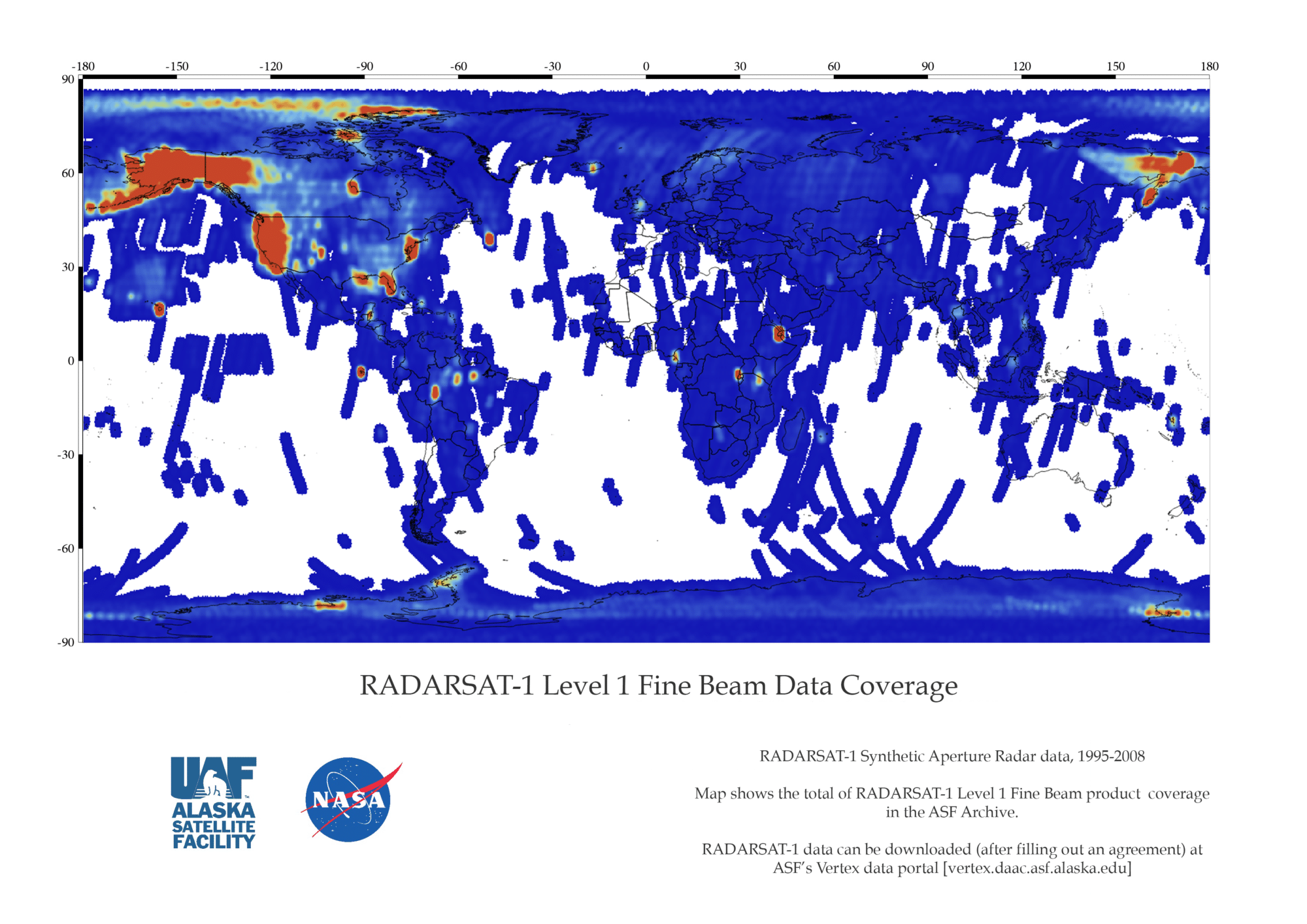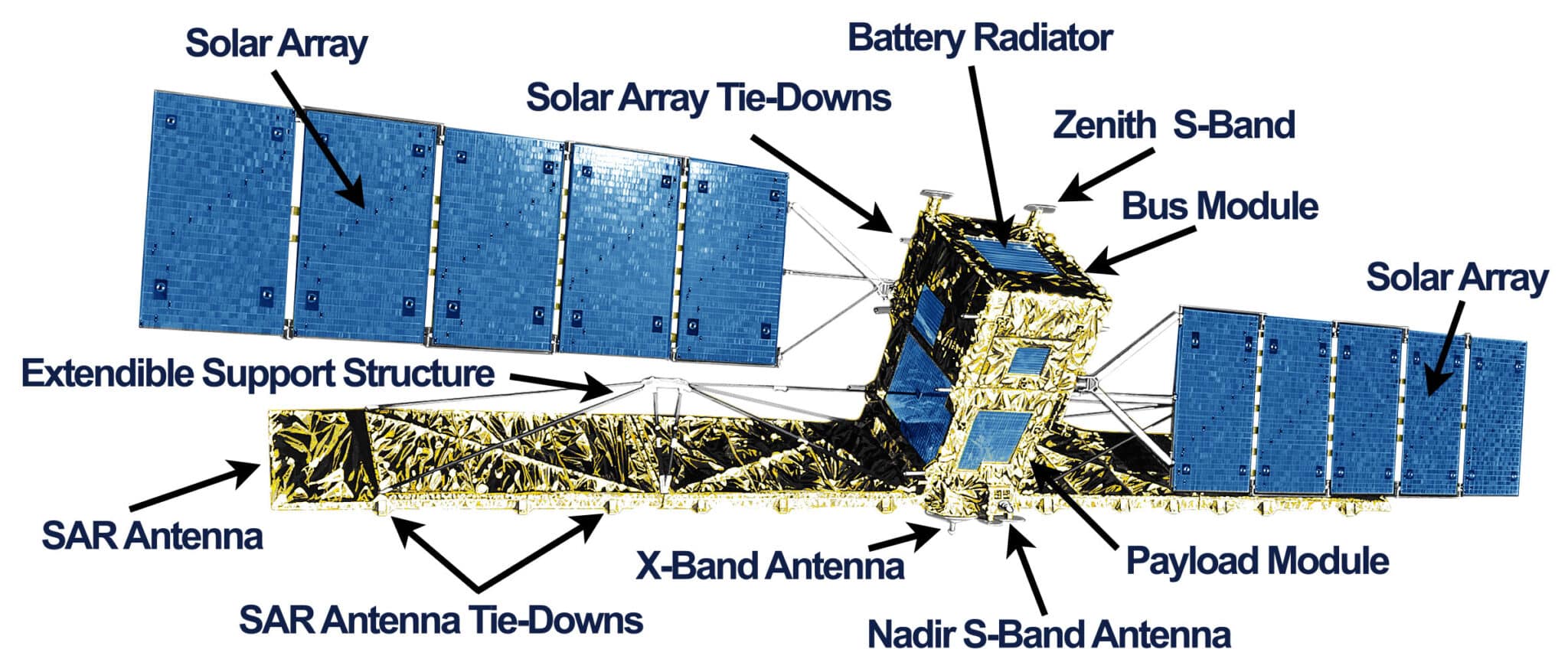RADARSAT-1
Table of contents
Coverage Maps
RADARSAT-1 Level 1 Standard Beam Data Coverage

RADARSAT-1 Level 1 Fine Beam Data Coverage

RADARSAT-1 Level 1 ScanSAR Wide Beam Data Coverage

Instrument
RADARSAT-1 was equipped with a powerful SAR sensor. It transmitted and received signals to capture high-quality images of the Earth night and day and in all weather conditions. RADARSAT-1 transmitted a microwave energy pulse (C-band at 5.3 GHz frequency) to Earth, and the SAR measured the amount of energy reflected back to the satellite from the Earth’s surface.
The RADARSAT-1 instrument was able to shape and steer its radar beam using C-band. A wide variety of beam widths were available to capture swaths of 45 to 500 kilometers, with a range of 8 to 100 meters in resolution and incidence angles of 10 to 60 degrees.
SAR Modes
Radarsat-1 Beam Modes
| Parameter | Fine Beam Mode | Standard Beam Mode | ScanSAR Beam Mode |
|---|---|---|---|
| Center Frequency | 5.3 GHz/C-band 5.6 cm | 5.3 GHz/C-band 5.6 cm | 5.3 GHz/C-band 5.6 cm |
| Polarization | HH | HH | HH |
| Spatial Resolution | 8 m | 30 m | 50-100 m |
| Swath Width | 45 km | 100 km | 300-500 km |
| Off-Nadir Angle | 37-47° | 20-49° | 20-49° |
Documents and Tools
The RADARSAT Data Product Specifications Guide provides an overview of the endorsed products generated by the RADARSAT program. This document outlines the suite of available RADARSAT products, the product delivery options, and product attributes such as image quality, resolution and size. The CEOS format for RADARSAT data is also defined for each record in structure and contents.




